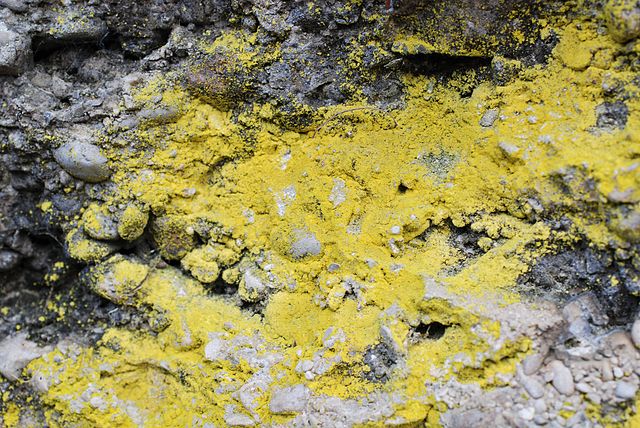The Teloschistaceae are a large family of mostly lichen-forming fungi belonging to the class Lecanoromycetes in the division Ascomycota. The family has a cosmopolitan distribution, although its members occur predominantly in temperate regions. Most members are lichens that either live on rock or on bark, but about 40 species are lichenicolous – meaning they are non-lichenised fungi that live on other lichens. Many members of the Teloschistaceae are readily identifiable by their vibrant orange to yellow hue, a result of their frequent anthraquinone content. The presence of these anthraquinone pigments, which confer protection from ultraviolet light, enabled this group to expand from shaded forest habitats to harsher environmental conditions of sunny and arid ecosystems during the Late Cretaceous.
Teloschistaceae
An ascus of the crustose lichen Pyrenodesmia variabilis, containing eight polarilocular ascospores
In contrast to its barely visible thallus, the apothecia of Athallia holocarpa are prominent. Like most Teloschistaceae, these apothecia are lecanorine in form: rounded with thick, pale, thalline margins.
crustose, leprose: Leproplaca chrysodeta
Rusavskia elegans, commonly known as the elegant sunburst lichen, is a lichenized species of fungus in the genus Rusavskia, family Teloschistaceae. Recognized by its bright orange or red pigmentation, this species grows on rocks, often near bird or rodent perches. It has a circumpolar and alpine distribution. It was one of the first lichens to be used for the rock-face dating method known as lichenometry.
Rusavskia elegans
Herbarium specimen of R. elegans, showing the lobes at 40X magnification
R. elegans on the rock's surface
R. elegans on rocky islet in Gaspereau Lake








